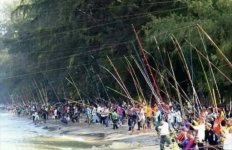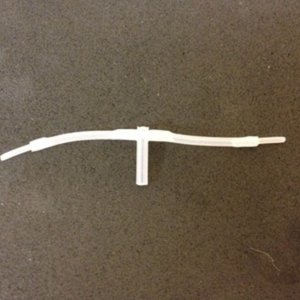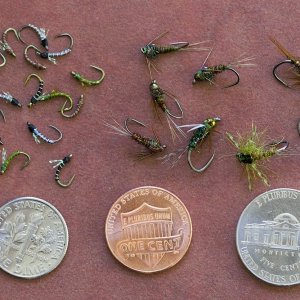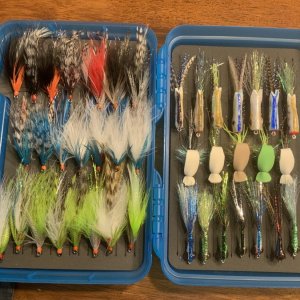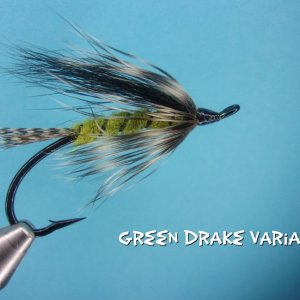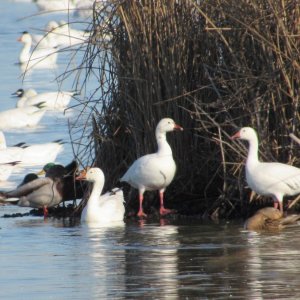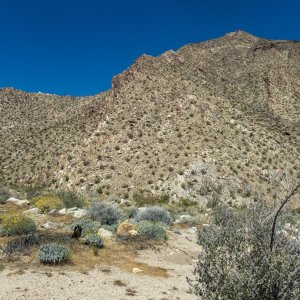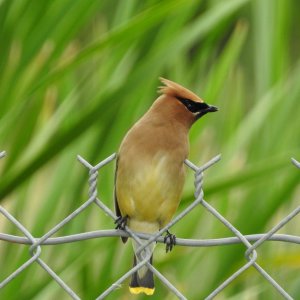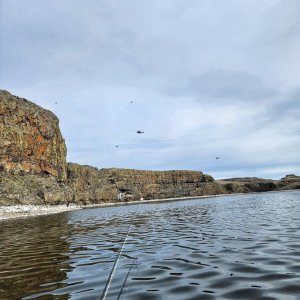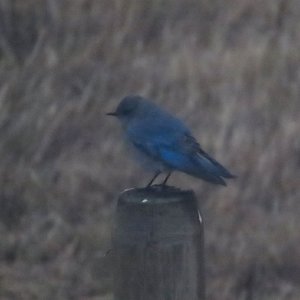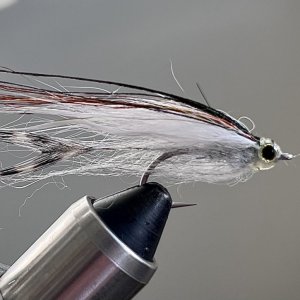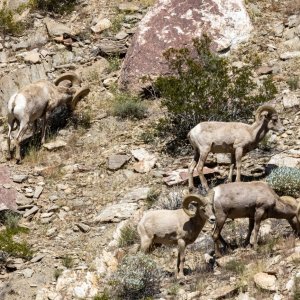Last pink season I found a great spot a short walk from a combat hole that gives me plenty of fish with no one to compete with. I checked it out recently and it looks like it is blocked off by a logjam now but I am sure with enough will power I could get over it. Hope to finally catch some on the fly. Would love to catch fish in the salt too, but I know east side beaches are harder to fish from, or at least were last year
You are using an out of date browser. It may not display this or other websites correctly.
You should upgrade or use an alternative browser.
You should upgrade or use an alternative browser.
Pink Year
- Thread starter Irafly
- Start date
I wanted to beat him to it. Give love before the hate.I fully anticipated @Stonedfish to be the one to start this thread
I just mark my sculpin as pinks.It's always a special time of year when the first small area 10 June chinook gets bonked because it's a "pink".
It’s gonna’ be epic! 
wanderingrichard
Life of the Party
What's the run size prediction ?
What's the run size prediction ?
Yuge! I say it's going to be the most tremendous number of salmon anyone has seen. They're all talking about it. It's some kind of record. It's a tremendous run. You're going to be catching so much you're going to get sick of catching.
We will not see the official forecast until the end of February.
We do have a bit of information that might give us some insight into the potential numbers of pinks well see in 8 months or so. The last cycle escapements (in relation to basin goal), the egg survival (often driven by flooding), and marine conditions the juvenile pinks encountered.
I could find the 2001 escapements for 4 Puget Sound basins.
Reportedly the marine conditions this spring was better than recent averages so those pinks that reached the ocean may do reasonably well.
On the Skagit the 2021 escapement was 460,000 (basin goal 330,000) but the upper basin (where most of the pinks spawned) experience historical flooding so expect very poor egg survival and fewer than normal fry making it to the sound leading to a probable forecast below escapement needs in 2023.
Stillaguamish escapement was 235,000 (basin goal 155,000) did not experience the flooding that the Nooksack and Skagit had with an average peak flood so expect normal numbers of fry making it to the salt and a probable run size forecast adequate to support a fishery.
Snohomish escapement was 750,000 (basin goal 120,000) and the basin had slightly above an average peak flow. Again expected a forecast sufficient to support a fishery and perhaps a very large run.
The Dungeness had an escapement of 158,00 (basin goal 85,000) had a peak flow that was slightly below average. Expect a forecast sufficient to support a fishery and likely larger than 2021.
Given the historic flooding on the upper Skagit, the Nooksack and Fraser (BC) there will likely be significant conservation concerns on pinks returning to those basins. I would not be surprised to see no pink fisheries in the Straits (MA 5, MA 6) and San Juans (MA 7) or MA 8-1. The rest of the sound should expect a good season with similar or larger numbers than seen in 2021.
Curt
We do have a bit of information that might give us some insight into the potential numbers of pinks well see in 8 months or so. The last cycle escapements (in relation to basin goal), the egg survival (often driven by flooding), and marine conditions the juvenile pinks encountered.
I could find the 2001 escapements for 4 Puget Sound basins.
Reportedly the marine conditions this spring was better than recent averages so those pinks that reached the ocean may do reasonably well.
On the Skagit the 2021 escapement was 460,000 (basin goal 330,000) but the upper basin (where most of the pinks spawned) experience historical flooding so expect very poor egg survival and fewer than normal fry making it to the sound leading to a probable forecast below escapement needs in 2023.
Stillaguamish escapement was 235,000 (basin goal 155,000) did not experience the flooding that the Nooksack and Skagit had with an average peak flood so expect normal numbers of fry making it to the salt and a probable run size forecast adequate to support a fishery.
Snohomish escapement was 750,000 (basin goal 120,000) and the basin had slightly above an average peak flow. Again expected a forecast sufficient to support a fishery and perhaps a very large run.
The Dungeness had an escapement of 158,00 (basin goal 85,000) had a peak flow that was slightly below average. Expect a forecast sufficient to support a fishery and likely larger than 2021.
Given the historic flooding on the upper Skagit, the Nooksack and Fraser (BC) there will likely be significant conservation concerns on pinks returning to those basins. I would not be surprised to see no pink fisheries in the Straits (MA 5, MA 6) and San Juans (MA 7) or MA 8-1. The rest of the sound should expect a good season with similar or larger numbers than seen in 2021.
Curt
JayB
Steelhead
IIRC the pink season on the Snohomish was very short during the last run. Like maybe 3 days? My assumption at the time was that the restrictions were driven by concern for the wild coho run. If that was the case, and there's not a massive rebound in the coho forecast, I suspect that even if there's a massive pink run there will probably be a very limited season on the Snohomish season.We will not see the official forecast until the end of February.
We do have a bit of information that might give us some insight into the potential numbers of pinks well see in 8 months or so. The last cycle escapements (in relation to basin goal), the egg survival (often driven by flooding), and marine conditions the juvenile pinks encountered.
I could find the 2001 escapements for 4 Puget Sound basins.
Reportedly the marine conditions this spring was better than recent averages so those pinks that reached the ocean may do reasonably well.
On the Skagit the 2021 escapement was 460,000 (basin goal 330,000) but the upper basin (where most of the pinks spawned) experience historical flooding so expect very poor egg survival and fewer than normal fry making it to the sound leading to a probable forecast below escapement needs in 2023.
Stillaguamish escapement was 235,000 (basin goal 155,000) did not experience the flooding that the Nooksack and Skagit had with an average peak flood so expect normal numbers of fry making it to the salt and a probable run size forecast adequate to support a fishery.
Snohomish escapement was 750,000 (basin goal 120,000) and the basin had slightly above an average peak flow. Again expected a forecast sufficient to support a fishery and perhaps a very large run.
The Dungeness had an escapement of 158,00 (basin goal 85,000) had a peak flow that was slightly below average. Expect a forecast sufficient to support a fishery and likely larger than 2021.
Given the historic flooding on the upper Skagit, the Nooksack and Fraser (BC) there will likely be significant conservation concerns on pinks returning to those basins. I would not be surprised to see no pink fisheries in the Straits (MA 5, MA 6) and San Juans (MA 7) or MA 8-1. The rest of the sound should expect a good season with similar or larger numbers than seen in 2021.
Curt
On a related point - I briefly looked into the methodology used to develop the Snohomish forecast, and it looked like it was based in large part on outmigrating fry capture from a trap somewhere on the lower reaches of the Sky. When I looked at the report, it looked like trap operations were dependent on grants and other irregular sources of funding, which resulted in effort that varied significantly from year to year. At first glance, it didn't look like there was much or any effort to account for variations in factors that could drive seasonal variations in capture efficiency, such as outflow variation during outmigration, or even total hours of effort.
My assumption is that I just missed an appendix or a citation where they factor all of these variations in before computing the run forecast based on smolt-capture, but I had a hard time shaking a nagging feeling that the processes used to develop the run forecast for the Snoho might not be particularly robust or reliable - and that if the process generated a low forecast there wasn't much incentive for anyone working for the State to double check the forecast. Am I completely off base here?
From what I can recall, the Snoho as late as 2013-15 (maybe even 2017?) to regularly open as early as August 1-15 for pinks. That was a fun fishery. Here's to hoping that we'll see longer seasons in the future.
My understanding of the Snohomish Basin smolt trapping is that there are usually, ideally, two traps run--one on the Lower Skykomish and one on the Lower Snoqualmie. Exact sites have shifted (I think only once each) over time due to land ownership and channel changes. There are statistical methods used to refine the run projections based on many variables including variables in the rotary screw trap data, and I definitely do not know all the specific ins and outs of that, but they do account for all or many of the things you mention. One standard metric is CPUE or catch per unit effort so that is one way to examine and start to account for variations in total hours of effort. And yes, the funding for the traps, which are run by the Tulalip Tribes, is sort of cobbled together with a mix of federal and local grants but they are able to consistently get that funding, in no small part because the data is recognized as being so valuable by the salmon recovery funder type folks. Most basins actually don't have this level of monitoring effort, as basic and important as it may seem. Another thing I don't know anything about is how the data is used to set seasons, but it is reportedly used "to refine preseason run size forecasting by harvest managers." https://www.webapps.nwfsc.noaa.gov/apex/f?p=309:19:::::P19_PROJECTID:48573376IIRC the pink season on the Snohomish was very short during the last run. Like maybe 3 days? My assumption at the time was that the restrictions were driven by concern for the wild coho run. If that was the case, and there's not a massive rebound in the coho forecast, I suspect that even if there's a massive pink run there will probably be a very limited season on the Snohomish season.
On a related point - I briefly looked into the methodology used to develop the Snohomish forecast, and it looked like it was based in large part on outmigrating fry capture from a trap somewhere on the lower reaches of the Sky. When I looked at the report, it looked like trap operations were dependent on grants and other irregular sources of funding, which resulted in effort that varied significantly from year to year. At first glance, it didn't look like there was much or any effort to account for variations in factors that could drive seasonal variations in capture efficiency, such as outflow variation during outmigration, or even total hours of effort.
My assumption is that I just missed an appendix or a citation where they factor all of these variations in before computing the run forecast based on smolt-capture, but I had a hard time shaking a nagging feeling that the processes used to develop the run forecast for the Snoho might not be particularly robust or reliable - and that if the process generated a low forecast there wasn't much incentive for anyone working for the State to double check the forecast. Am I completely off base here?
From what I can recall, the Snoho as late as 2013-15 (maybe even 2017?) to regularly open as early as August 1-15 for pinks. That was a fun fishery. Here's to hoping that we'll see longer seasons in the future.
There are traps on all the streams around here, and have been for like 30 years. Usually lower in pike minnow waters. Kinda fun, when someone comes down with a bucket in hand, it's almost always a former student.Most basins actually don't have this level of monitoring effort, as basic and important as it may seem.
Rotary screw traps? That's awesome...and if so, I bet it benefits from mandated fish spending from BPA; just a guess, though. If I amend the statement to "Most Puget Sound basins actually don't have this level of monitoring effort, as basic and important as it may seem," maybe that's better?There are traps on all the streams around here, and have been for like 30 years. Usually lower in pike minnow waters. Kinda fun, when someone comes down with a bucket in hand, it's almost always a former student.
Yep. I think your onto it. BPA money, and the CTUIR (Confederated Tribes of the Umatilla Indian Reservation).Rotary screw traps? That's awesome...and if so, I bet it benefits from mandated fish spending from BPA; just a guess, though. If I amend the statement to "Most Puget Sound basins actually don't have this level of monitoring effort, as basic and important as it may seem," maybe that's better?
2021 had a nice long Pink season on the Snohomish. It started August 30th and ran till the middle of September I recall. The season got lengthened till the start of October I believe to allow some Coho fishingIIRC the pink season on the Snohomish was very short during the last run. Like maybe 3 days? My assumption at the time was that the restrictions were driven by concern for the wild coho run. If that was the case, and there's not a massive rebound in the coho forecast, I suspect that even if there's a massive pink run there will probably be a very limited season on the Snohomish season.
On a related point - I briefly looked into the methodology used to develop the Snohomish forecast, and it looked like it was based in large part on outmigrating fry capture from a trap somewhere on the lower reaches of the Sky. When I looked at the report, it looked like trap operations were dependent on grants and other irregular sources of funding, which resulted in effort that varied significantly from year to year. At first glance, it didn't look like there was much or any effort to account for variations in factors that could drive seasonal variations in capture efficiency, such as outflow variation during outmigration, or even total hours of effort.
My assumption is that I just missed an appendix or a citation where they factor all of these variations in before computing the run forecast based on smolt-capture, but I had a hard time shaking a nagging feeling that the processes used to develop the run forecast for the Snoho might not be particularly robust or reliable - and that if the process generated a low forecast there wasn't much incentive for anyone working for the State to double check the forecast. Am I completely off base here?
From what I can recall, the Snoho as late as 2013-15 (maybe even 2017?) to regularly open as early as August 1-15 for pinks. That was a fun fishery. Here's to hoping that we'll see longer seasons in the future.
JayB
Steelhead
You're right - not sure how I managed to register that one in the memory bank as a low-opportunity year. Maybe I'm melding the 2022 Snoho regs with 2019? Anyhow - clearly mis-remembered that one. Thanks for the correction.2021 had a nice long Pink season on the Snohomish. It started August 30th and ran till the middle of September I recall. The season got lengthened till the start of October I believe to allow some Coho fishing
JayB
Steelhead
My understanding of the Snohomish Basin smolt trapping is that there are usually, ideally, two traps run--one on the Lower Skykomish and one on the Lower Snoqualmie. Exact sites have shifted (I think only once each) over time due to land ownership and channel changes. There are statistical methods used to refine the run projections based on many variables including variables in the rotary screw trap data, and I definitely do not know all the specific ins and outs of that, but they do account for all or many of the things you mention. One standard metric is CPUE or catch per unit effort so that is one way to examine and start to account for variations in total hours of effort. And yes, the funding for the traps, which are run by the Tulalip Tribes, is sort of cobbled together with a mix of federal and local grants but they are able to consistently get that funding, in no small part because the data is recognized as being so valuable by the salmon recovery funder type folks. Most basins actually don't have this level of monitoring effort, as basic and important as it may seem. Another thing I don't know anything about is how the data is used to set seasons, but it is reportedly used "to refine preseason run size forecasting by harvest managers." https://www.webapps.nwfsc.noaa.gov/apex/f?p=309:19:::::P19_PROJECTID:48573376
Thanks. I haven't had the time (and probably won't anytime soon) to do a deep dive into the methods, but when I was skimming through the discussion how they used the trap data to help calculate the run sizes I had flashbacks to the many years I spent deploying various molecular-bio/biochem techniques to use, and how hard it was even for people in the field, who were used to looking at experimental data, to evaluate the quality of the data/results derived from methods that they weren't extremely well versed in as hands-on practitioners. I can remember thinking "Man - if it's that hard for those of us actually working in biomed research to spot bad data generated using techniques we're not expert in, there's little to no chance that anyone outside the field would have the slightest clue which results were true and which were completely bogus."
Not saying that anyone's trying to fool anyone with trap-data, but my experience was that the more complex the statistical/hypothetical machinery you had to feed your results into to generate an output, the more careful/skeptical you had to be when evaluating them. Modeling returns is obviously an immensely complicated affair with lots of black boxes standing in between inputs and outputs, so even with the most impeccable methods you'd probably still be generating pre-season forecasts where the magnitude of the error bars was larger than the actual run size.
G_Smolt
Legend
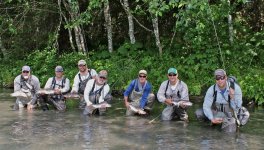
Throwback to 2013, when I was a clean-shaven humpy pimp and we got about 70 million pinks back to Northern SouthEast Inside waters. Forget doubles and triples...septets were all the rage (octets, actually - the photographer (Matt Smythe) had a fish on while taking this pic).
I'm a firm believer in the humpy. They're the gateway drug of anadromous fly angling.
#humpiespaythebills #pinksaresalmontoo
Get the still bright early run fish from the salt, bleed them immediately then clean them quickly, followed by getting them on ice (including in the cavity). Those will be your best humpies for eating.Anyone figure out a way to eat them that doesn't taste bad? So far besides burgers I haven't found anything, but if there is a way to prepare the meat I'd love to lower my impact on the stocks of greater concern
Anyone figure out a way to eat them that doesn't taste bad? So far besides burgers I haven't found anything, but if there is a way to prepare the meat I'd love to lower my impact on the stocks of greater concern
Put them in the smoker.
I've shared smoked humpy with friends and they couldn't tell it was humpy. Although it might not matter because anything smoked tastes good though.

